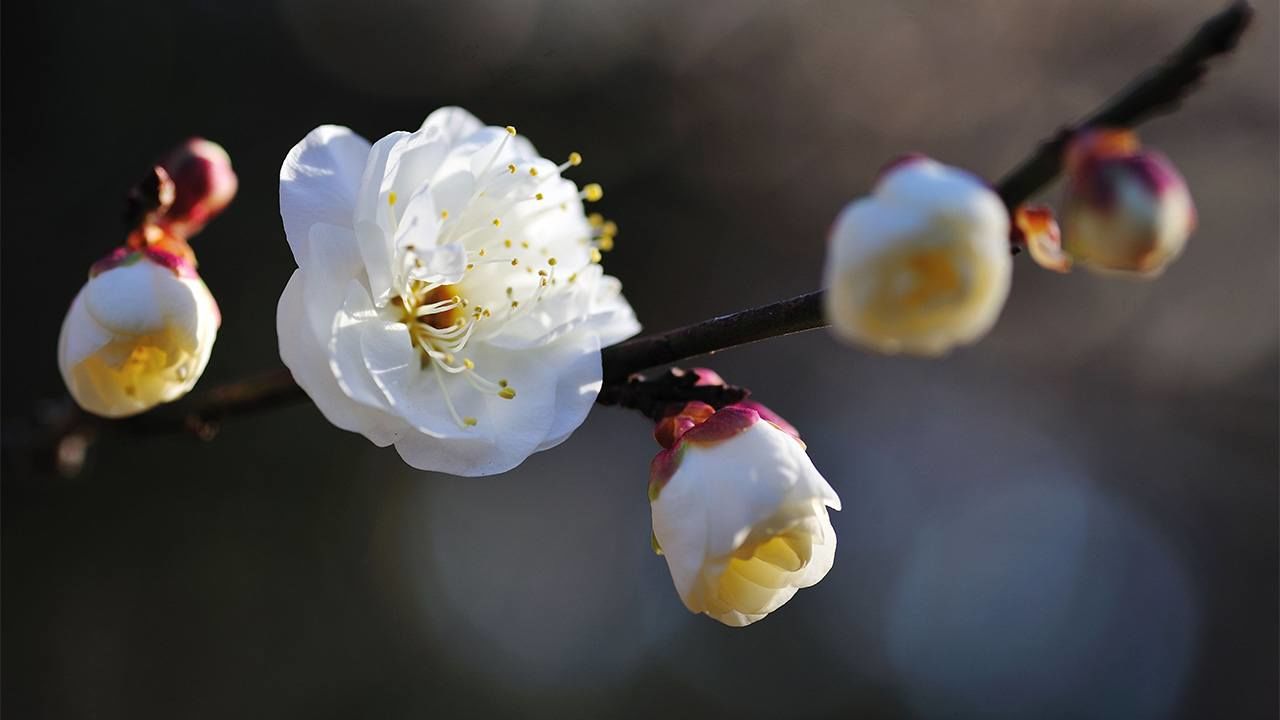
A Journey Through Japanese Haiku
Plum Blossoms at Dawn
Culture Environment Lifestyle- English
- 日本語
- 简体字
- 繁體字
- Français
- Español
- العربية
- Русский
しら梅に明る夜ばかりとなりにけり 蕪村
Shiraume ni / akuru yo bakari to / nari ni keri
Amid white
plum blossoms, dawn
breaking now(Poem by Buson, written in January 1784.)
On the night of January 16, 1784, Yosa Buson called his disciples to his deathbed to record two haiku featuring the uguisu, or bush warbler, in winter. Fuyuuguisu / mukashi Ōi ga / kakine kana (Winter uguisu— / long ago in / Wang Wei’s hedge); Uguisu ya / nani gosotsukasu / yabu no shimo (Uguisu— / a rustling in / the frosty grove). Whether in the hedge of the eighth-century Chinese poet and painter Wang Wei or rustling in the trees around Buson’s home, the bush warbler waits to herald the approaching spring. But really, it is Buson who is impatient for the spring, and the uguisu represents his soul.
Then, Buson murmured one more haiku, on the white plum blossoms, instructing that it should have the foreword “The beginning of spring,” before passing away in his sleep in the early dawn of January 17. As haiku are so brief in form, such forewords are intended to provide additional details on the circumstances of composition.
The plum blossom haiku seems to be an expression of the wishes of the uguisu, or Buson. “Now the night sky is brightening with dawn light from the direction of the newly blossoming white plum flowers. The long-awaited spring has come.” Dreaming of plum blossoms at dawn, surrounded by their aroma and certain of spring’s arrival, Buson departed forever.
(Originally published in Japanese. Banner photo © Pixta.)
literature Yosa Buson haiku Japanese language and literature